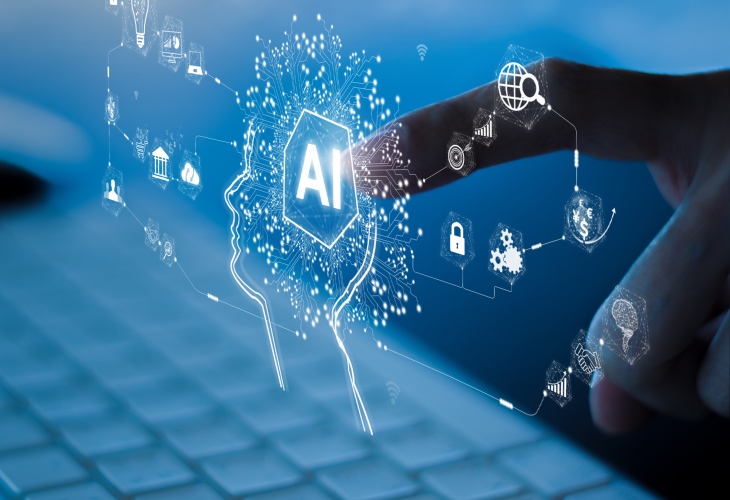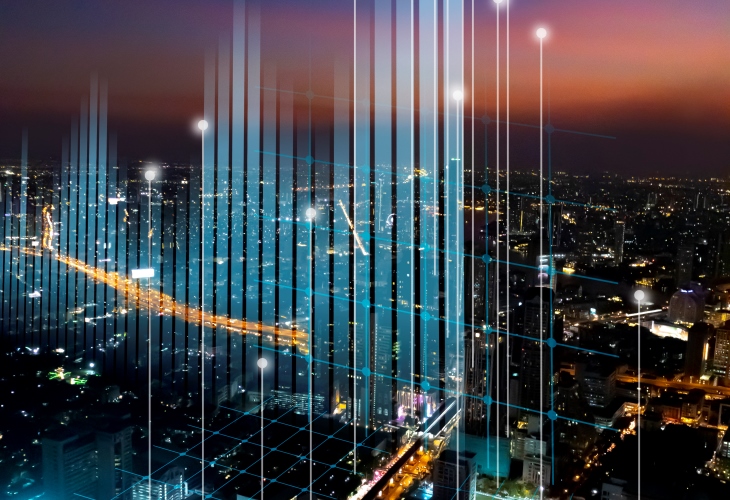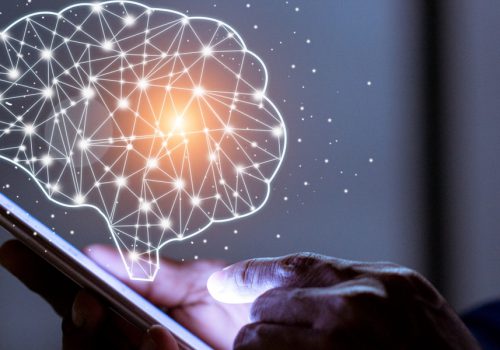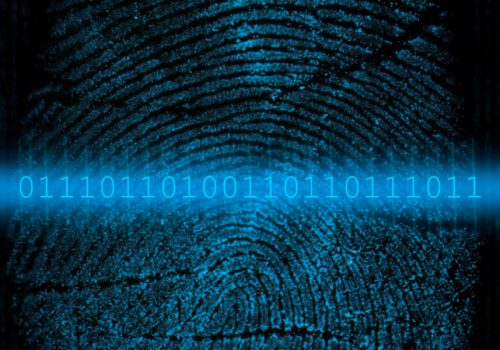In today’s technology-driven world, the need for robust cybersecurity measures has become more crucial than ever before. As cyber threats continue to evolve in complexity and sophistication, traditional defense strategies have proven to be ineffective in combating these malicious attacks. Enter artificial intelligence (AI), a revolutionary technology that is reshaping the landscape of cybersecurity.
Understanding the AI cybersecurity revolution is paramount to staying ahead of threats and safeguarding our digital assets.
Understanding the AI Cybersecurity Revolution
- Defining AI in Cybersecurity
At its core, AI refers to the ability of machines to mimic human intelligence and perform tasks that typically require human cognitive capabilities. In the context of cybersecurity, AI aims to enhance defense strategies by leveraging advanced algorithms, machine learning, and natural language processing to analyze vast amounts of data and identify potential threats in real time.
AI in cybersecurity is a game-changer. It empowers organizations to stay one step ahead of cybercriminals by automating the detection and response to threats. By harnessing the power of AI, organizations can analyze massive volumes of data, identify patterns, and detect anomalies that may indicate a potential cyber-attack.
Imagine a scenario where an AI-powered system continuously monitors network traffic, user behavior, and system logs. It can quickly identify suspicious activities, such as unauthorized access attempts or unusual data transfers, and take immediate action to mitigate the risk. This level of proactive defense is crucial in today’s rapidly evolving threat landscape.
- The Evolution of AI in Cybersecurity
The use of AI in cybersecurity is not a recent phenomenon. It has been an evolutionary process, growing in sophistication along with the expanding threat vectors faced by organizations. Initially, rule-based systems were employed to detect known patterns of attacks. However, as adversaries became more adaptive, traditional rulebased approaches proved insufficient. As cybercriminals constantly evolve their tactics, AI systems need to keep up. This led to the introduction of machine learning algorithms, which enabled systems to learn from historical data and adapt to emerging threats. By analyzing past attack patterns and continuously updating their knowledge, AI systems can detect and respond to new and unknown threats effectively. But the evolution did not stop there. With the advent of deep learning and neural networks, AI systems gained the ability to process vast amounts of data and identify patterns that may indicate the presence of a cyber threat. Deep learning algorithms can analyze complex data structures, such as network traffic or malware code, and extract meaningful insights that human analysts might miss.
Moreover, AI systems can learn from their mistakes. When an AI system encounters a false positive or false negative, it can adjust its algorithms and improve its accuracy over time. This self-learning capability makes AI an invaluable asset in the fight against cybercrime. As AI continues to advance, we can expect even more sophisticated cybersecurity solutions. Imagine AI systems that can predict future cyber threats based on historical data and emerging trends. These systems could proactively implement preventive measures to thwart attacks before they even happen. In conclusion, the AI revolution in cybersecurity is reshaping the way organizations defend against cyber threats. By leveraging advanced algorithms, machine learning, and deep learning techniques, AI systems can analyze vast amounts of data, detect patterns, and respond to threats in real time. As the threat landscape continues to evolve, AI will play an increasingly critical role in safeguarding our digital world.

The Intersection of AI and Cybersecurity
- The Role of AI in Cybersecurity
AI plays a pivotal role in cybersecurity by augmenting human capabilities and automating repetitive tasks, allowing security professionals to focus on more complex challenges. With the increasing sophistication of cyber threats, AIpowered systems have become indispensable in ensuring the security and integrity of digital environments.
One of the key contributions of AI in cybersecurity is its ability to continuously monitor network traffic. By analyzing vast amounts of data in real time, AI systems can detect anomalies and patterns that may indicate potential threats. This proactive approach enables organizations to swiftly respond to emerging risks, minimizing the impact of cyber-attacks.
Moreover, AI systems can quickly respond to potential threats with minimal human intervention. Through machine learning algorithms, these systems can learn from historical data and make informed decisions on how to handle security incidents. This not only saves time but also ensures consistent and effective responses to different types of threats.
- Benefits of Integrating AI into Cybersecurity
The integration of AI into cybersecurity offers numerous benefits to organizations striving to protect their digital assets and sensitive information. Firstly, it enables organizations to detect and respond to attacks in realtime, minimizing the damages caused. By continuously monitoring network traffic and analyzing data from various sources, AI-powered systems can identify potential risks and vulnerabilities before they can be exploited.
Secondly, AI can significantly reduce the time and effort required to investigate and mitigate security incidents. Traditionally, security professionals had to manually analyze security logs and event data to identify the root causes of breaches. However, with AI systems in place, the process becomes automated, allowing for quicker identification of security breaches and suggesting appropriate remedial actions.
Furthermore, AI-driven cybersecurity solutions can adapt and evolve over time. By continuously learning from new threats and attack patterns, AI systems become more adept at detecting and preventing sophisticated cyberattacks. This adaptability provides enhanced defense capabilities against ever-evolving threats, ensuring that organizations stay one step ahead of malicious actors.
Additionally, the integration of AI into cybersecurity can help address the growing shortage of skilled security professionals. With the increasing complexity and volume of cyber threats, organizations often struggle to find and retain qualified personnel.
AI systems can alleviate this burden by automating repetitive tasks and augmenting the capabilities of existing security teams.
In conclusion, the intersection of AI and cybersecurity is revolutionizing the way organizations protect their digital assets. By leveraging AI’s capabilities in monitoring, detecting, and responding to threats, organizations can enhance their defense capabilities and stay resilient in the face of ever-evolving cyber threats.

AI-Driven Defense Strategies
- Predictive Capabilities of AI in Cybersecurity
One of the key advantages of AI in cybersecurity is its predictive capabilities. By analyzing historical data and patterns, AI can forecast potential future threats, enabling organizations to proactively implement targeted defense measures. This proactive approach allows for the prevention of attacks, rather than simply reacting to them after the fact.
For example, AI algorithms can analyze previous cyberattacks and identify common patterns or indicators that precede an attack. By recognizing these patterns, AI systems can alert organizations to the potential threat and suggest specific actions to mitigate the risk. This predictive capability not only saves time and resources but also enhances the overall security posture of the organization.
Furthermore, AI can continuously learn and adapt to new threats and attack techniques. As cybercriminals constantly evolve their methods, AI-powered systems can keep up with the latest trends and adjust their defense strategies accordingly. This dynamic nature of AI ensures that organizations stay one step ahead of potential attackers.
- AI in Threat Detection and Response
Traditional cybersecurity approaches heavily rely on predefined rules and signatures to detect known threats. However, with the ever-increasing number of cyberattacks and their variants, these rule-based systems are no longer sufficient.
AI-powered systems, on the other hand, can analyze vast volumes of data, including network traffic, system logs, and user behavior, to identify anomalies and indicators of compromise.
By leveraging machine learning algorithms, AI systems can detect new and emerging threats that may not be part of any predefined rule set, improving the overall threat detection capabilities of organizations.
Moreover, AI can automate and optimize incident response processes, ensuring swift and efficient mitigation of security breaches. AI-powered systems can autonomously investigate security incidents, perform forensic analyses, and implement remediation measures, minimizing the time required to contain and mitigate the impact of an attack. Additionally, AI can assist in the analysis of complex attack scenarios that involve multiple vectors and stages. By correlating data from various sources and applying advanced analytics, AI systems can uncover hidden connections and identify the root cause of an attack. This deep analysis helps organizations understand the full extent of the breach and take appropriate actions to prevent similar incidents in the future.
In conclusion, AI-driven defense strategies offer a wide range of benefits in the field of cybersecurity. From predictive capabilities that enable proactive defense measures to advanced threat detection and response capabilities, AI empowers organizations to stay ahead of cyber threats and protect their valuable assets.
Challenges and Limitations of AI in Cybersecurity
- Ethical Considerations in AI Cybersecurity
As AI becomes increasingly integrated into cybersecurity, ethical considerations come to the forefront. There are concerns regarding potential biases in AI algorithms and the impacts they may have on privacy and civil liberties. To address these concerns, it is essential to have robust governance frameworks and ensure transparency and accountability in AI systems. One of the ethical challenges in AI cybersecurity is the potential for algorithmic bias.
AI algorithms are trained on historical data, which may contain biases and prejudices. If these biases are not identified and addressed, AI systems may perpetuate and amplify existing inequalities. For example, an AI system that is biased against certain demographics may disproportionately flag individuals from those groups as potential threats, leading to unfair targeting and discrimination.
Another ethical consideration is the impact of AI on privacy and civil liberties. AI systems often require access to large amounts of personal data to effectively detect and mitigate cyber threats. However, the collection and use of this data raise concerns about surveillance and the potential for misuse. Striking a balance between effective cybersecurity and protecting individual privacy rights is a complex challenge that requires careful consideration and regulation.
- Technical Challenges in AI Implementation
Implementing AI in cybersecurity poses several technical challenges. Firstly, AI algorithms require vast amounts of high-quality training data. Collecting and curating such data can be a daunting task, particularly as cyber threats constantly evolve.
Furthermore, the quality and diversity of training data directly impact the performance and accuracy of AI systems. If the training data is incomplete, biased, or not representative of the real-world cyber landscape, the AI algorithms may produce unreliable results. Therefore, organizations must invest significant resources in data collection and curation to ensure the effectiveness of AIdriven cybersecurity. Additionally, the performance of AI algorithms heavily relies on the computational resources available. Real-time analysis of vast data sets can be computationally intensive, requiring substantial processing power and memory. Organizations must invest in powerful hardware infrastructure to realize the full potential of AI-driven cybersecurity.
Moreover, the complexity of cyber threats and the everevolving nature of attacks pose ongoing challenges for AI systems. Adversarial attacks, where malicious actors intentionally manipulate data to deceive AI algorithms, can undermine the effectiveness of AI-driven cybersecurity. Continual research and development are necessary to enhance AI algorithms’ robustness and resilience against such attacks.
In conclusion, while AI holds great promise in revolutionizing cybersecurity, there are significant challenges and limitations that need to be addressed. Ethical considerations, such as algorithmic bias and privacy concerns, must be carefully managed to ensure fairness and protect individual rights.
Additionally, organizations must overcome technical challenges related to data quality, computational resources, and the evolving nature of cyber threats. By addressing these challenges, AI can play a crucial role in strengthening cybersecurity defenses and safeguarding digital ecosystems.

The Future of AI in Cybersecurity
- Emerging Trends in AI Cybersecurity
Looking ahead, several emerging trends are shaping the future of AI in cybersecurity. One such trend is the concept of “explainable AI,” which seeks to demystify the decision-making process of AI systems to enhance trust and transparency.
Another promising trend is the collaboration between AI and human experts, leveraging the unique strengths and abilities of both parties. This partnership can lead to more effective and efficient defense strategies, enabling organizations to stay one step ahead of cyber threats.
- The Potential Impact of AI on Cybersecurity Policies
With the increasing adoption of AI in cybersecurity, it is inevitable that policies and regulations will need to evolve to address the unique challenges and risks associated with this technology. Governments and regulatory bodies must collaborate with industry experts to establish guidelines and standards that ensure the responsible and ethical use of AI in cybersecurity.
In conclusion, the AI cybersecurity revolution is transforming how we defend against constantly evolving cyber threats. By harnessing the power of AI, organizations can detect and respond to attacks in real time, predict future threats, and enhance their overall defense capabilities. However, it is crucial to address the ethical considerations and technical challenges that accompany the integration of AI in cybersecurity. With the proper governance frameworks and collaborative efforts, AI will continue to shape the future of cybersecurity, enabling us to safeguard our digital assets in an increasingly interconnected world.









